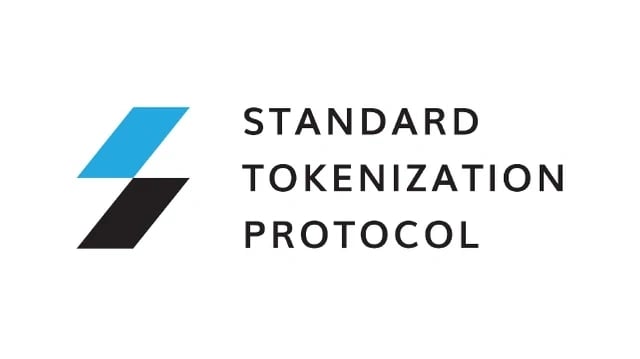위키 구독하기
Share wiki
Bookmark
STP Network
STP Network
**STP 네트워크 (STPT)**는 STP 토큰에 의해 구동되는 디지털 자산 발행을 위한 탈중앙화 플랫폼으로, 전 세계 여러 관할 구역에서 규정을 준수하는 방식으로 토큰 제공을 가능하게 했습니다. [1]
개요
표준 토큰화 프로토콜(STP) 네트워크는 이더리움, 폴리곤, BNB 체인, 클레이튼을 포함한 여러 블록체인에서 DAO 생성 및 관리를 간소화하기 위한 노코드 도구 및 인프라를 제공했습니다. 2021년 EVM 호환 플랫폼에서 Verse 네트워크로 처음 출시된 STP는 탈중앙화 의사결정, 크로스체인 상호운용성, 확장성 및 운영 효율성을 개선하는 것을 목표로 했습니다. 2022년에는 고 처리량과 낮은 거래 수수료를 제공하여 더욱 확장 가능하고 안전한 DAO 운영을 지원하는 BNB 체인 애플리케이션 사이드체인(BAS)을 도입했습니다.
STP는 게임 및 메타버스 환경에서 지속적인 사용자 상호 작용을 위한 실시간 온체인 환경인 자율 세계(AW)를 개발하여 기존 DAO 사용 사례를 넘어 확장했습니다. 당시 STP는 탈중앙화 거버넌스, 게임, e스포츠 및 AI 커뮤니티에 걸쳐 440개 이상의 DAO를 지원했습니다. 네이티브 토큰인 STPT는 DAO 생태계의 단편화를 줄이고 Clique 플랫폼을 통해 노코드 DAO 생성 및 관리를 가능하게 하는 유틸리티 자산 역할을 했습니다. 이 도구는 여러 DAO를 감독하고 규정 준수 기능을 통합하는 중앙 대시보드를 제공했습니다. STPT는 발행자 특정 및 규정 준수 규칙을 온체인으로 적용하는 권한 부여된 ERC-20 토큰을 발행하는 데에도 사용되어 규정 준수 자산 토큰화 및 국경 간 소유권 이전을 가능하게 했습니다. [7] [8]
리브랜딩
2025년 5월, STP 네트워크는 커뮤니티 승인 제안에 따라 AWE 네트워크로 리브랜딩되었으며, 조정 인프라에서 자율 세계로의 전략적 전환을 나타냅니다. 리브랜딩에는 총 공급량의 변화 없이 $STPT에서 $AWE로의 1:1 토큰 스왑과 함께 웹사이트, 시각적 정체성, 소셜 미디어 및 모든 생태계 참조에 대한 업데이트가 포함됩니다.
AWE 네트워크는 병렬 처리 및 GPU 최적화와 같은 고급 기술을 사용하여 수천 명의 에이전트가 협업하는 확장 가능한 AI 기반 자율 세계를 가능하게 하는 데 중점을 둡니다. 이러한 전환은 2019년 출시 이후 STP의 발전, 즉 DAO 툴링 및 ID 시스템에서 AI 에이전트 및 다중 에이전트 환경으로의 발전을 반영하며, 탈중앙화 ID 프로토콜인 AWNS 및 학습과 상호 작용할 수 있는 AI 에이전트를 위한 인프라와 같은 개발이 포함됩니다. 리브랜딩은 프로젝트의 정체성을 새로운 방향과 생태계 목표에 맞춥니다. [9] [10]
기능
STPT 표준

STP 네트워크의 STP 표준은 토큰화된 자산의 소유권이 생성, 발행, 전송 및 수신되는 방식을 정의하는 오픈소스 표준으로, 필요한 규정을 준수했습니다. STP 표준을 기반으로 구축된 모든 것은 프로토콜의 온체인 규정 준수 검증기를 사용하여 관련 법률(KYC, AML, 인증 등) 및 발행자 특정 요구 사항(소유권 집중, 보유 기간 및 투표 포함)을 준수하는지 확인했습니다. 검증자 위원회는 규정 준수 검증기가 최신 법률을 시행하도록 자문 역할을 수행했습니다. STP 네트워크를 통해 자산은 완전히 준수하는 방식으로 관할 구역과 플랫폼 간에 자유롭게 이동할 수 있었습니다. [4]
STP 2.0
STP 2.0은 폴카닷에서 개발된 합성 토큰화 프로토콜로, 여러 블록체인 네트워크의 토큰을 나타내는 합성 자산(ST-자산)의 생성 및 거래를 가능하게 했습니다. 이는 크로스체인 가치 전송을 지원했으며 사용자가 다양한 토큰 표준에 걸쳐 자산 그룹을 추적하는 다중 체인 지수를 구축할 수 있도록 했습니다. 플랫폼은 처음에 이러한 지수를 발행하여 나중에 사용자가 이를 사용자 지정할 수 있도록 할 계획이었습니다. 폴카닷의 인프라는 이더리움에 비해 상호 운용성을 지원하고 거래 효율성을 높이도록 설계되었습니다. [4]
잘못된 내용이 있나요?
